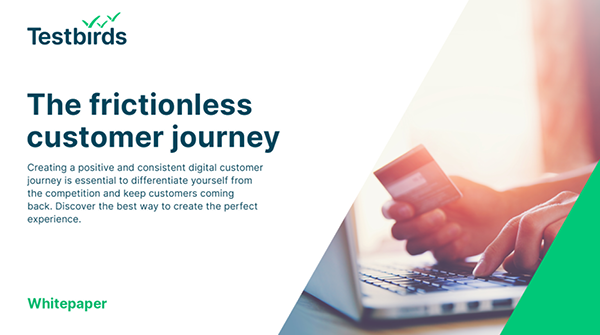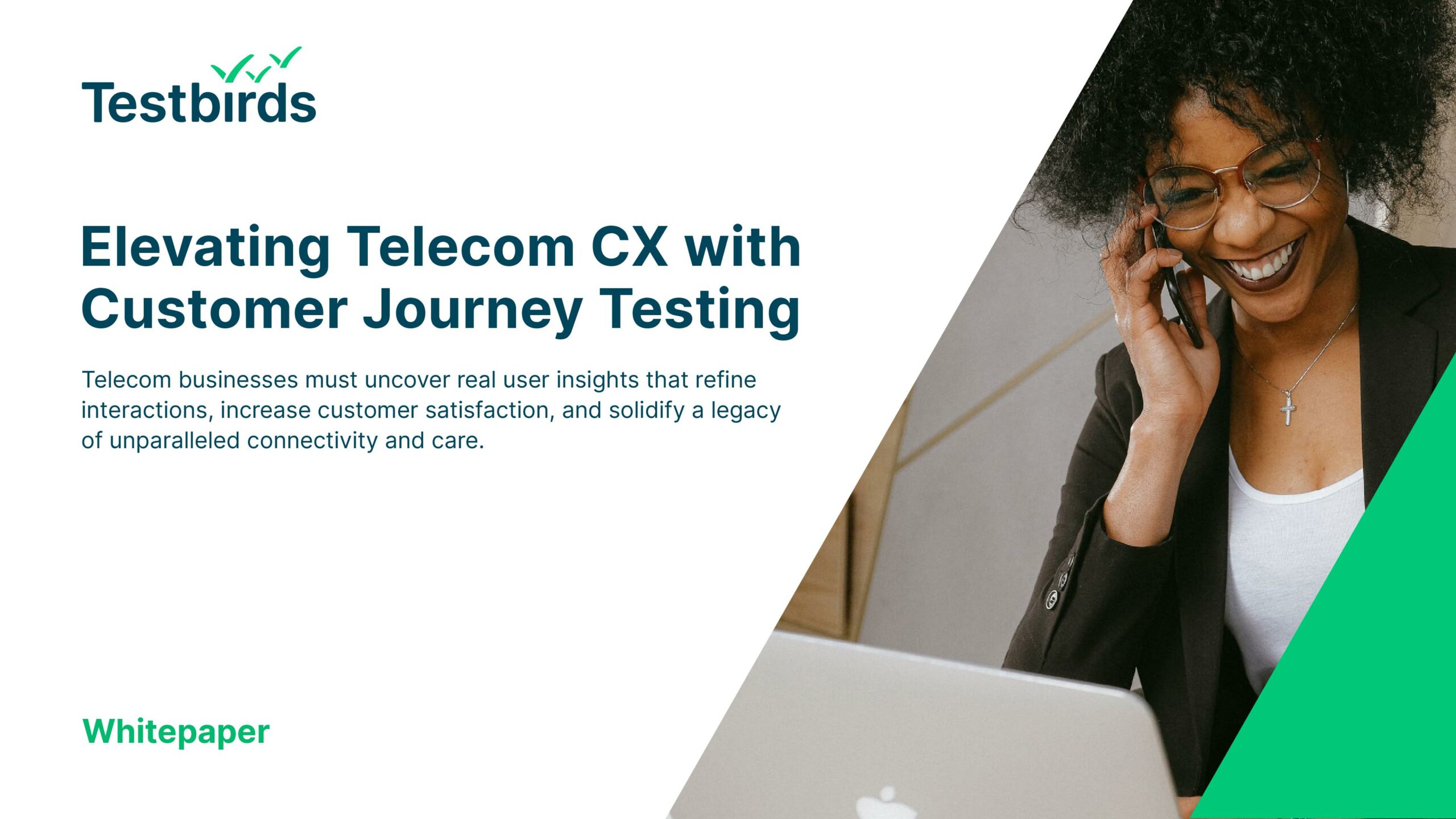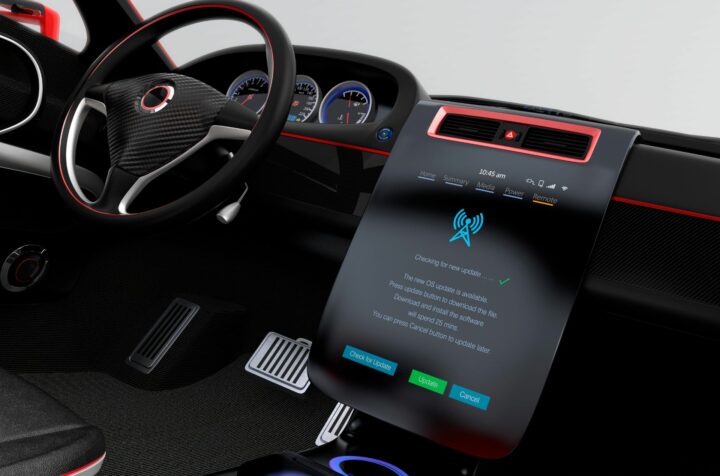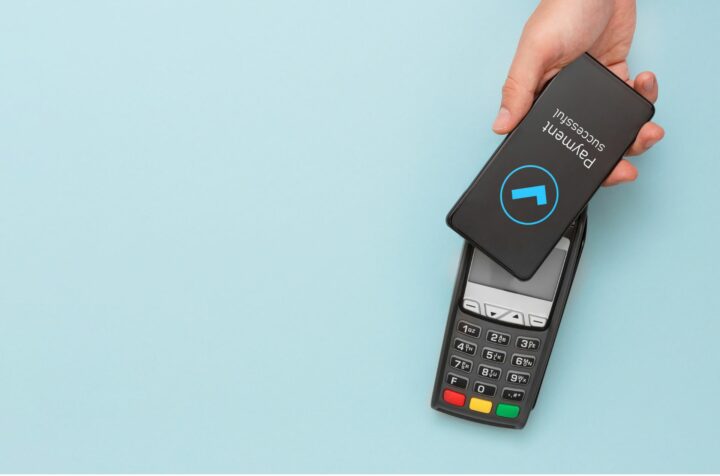In Brief
The journey a customer takes, from the initial spark of awareness to becoming a loyal advocate, has never been more complex or critical. This dynamic landscape requires a deep understanding of the customer journey that organizations must navigate with precision and finesse.
In this article, we’ll explore the core concepts and strategies that enable organizations to better understand and optimize this journey.
Key TakeawaysKey Takeaways:
Embracing the Customer Journey: Understanding that the customer journey, from initial awareness to loyalty forms the foundation of customer-centric business strategy.
Segmentation as a Game-Changer: Segmenting your customer base and tailoring their journeys allows for personalized experiences, increased retention, and efficient resource allocation.
The Mobile-First Imperative: Adopting a mobile-first approach is crucial in today’s landscape, as smartphones play a pivotal role in how customers engage with brands and make buying decisions.
Empowering the Customer: Empowering customers with information and resources fosters trust, loyalty, and engagement, making them active participants in their journey.
Common Challenges and Solutions: Recognizing and addressing common challenges, such as departmental silos, complexity, generic journeys, and data gaps, is essential for successful journey optimization.
We also talk about being customer-centric, the six stages of the journey, navigating new regulations, technology’s vital role, customer touchpoints, how crowdtesting can help, and much more.
Show less- What is the Customer Journey?
- Stages of the Customer Journey
- Benefits of Customer Journey segmentation
- Customer Journey vs Customer Experience (CX)
- Customer touchpoints and the buyer journey
- Identifying Customer Journey touchpoints
- Optimizing the Customer Journey
- How can Customer Journey optimization improve CX?
- Challenges and solutions for optimizing the Customer Journey
- Checklist to start optimizing the Customer Journey
- Crowdtesting the Customer Journey
- Success stories
Understanding the Customer Journey: Benefits, Touchpoints, and Optimization
What is the Customer Journey?
At its core, the customer journey is the path an individual takes from their first encounter with your brand to, hopefully, becoming a passionate advocate of yours. It’s the narrative of their experiences, decisions, and interactions, and it encompasses every touchpoint from first contact to final purchase and beyond.
Focusing on the customer journey, and taking a customer-centric approach, places the customer at the center of your business strategy. It acknowledges that every interaction with your brand matters and strives to make those interactions positive and meaningful.
Regardless of industry – whether BFSI, manufacturing, retail, telecommunications, and more – companies that prioritize understanding and improving the customer journey are poised to thrive in this environment. They recognize that today’s consumers don’t just seek products or services, but memorable, personalized experiences. To deliver, companies must orchestrate every stage of the customer journey with precision.
What are the stages of the Customer Journey?
The customer journey is characterized by six distinct stages, each with its own unique challenges and opportunities. Let’s take a closer look (we’ll be coming back to them later):
1. Awareness: The journey often begins when a prospect becomes aware of your brand. It’s the moment of introduction, when curiosity is piqued.
2. Consideration: Once aware, the customer moves into the consideration phase. Here, they explore your offerings, conduct research, and weigh their options. It’s a critical juncture where well-crafted messaging, visualizations, etc., can make all the difference.
3. Decision: The decision stage is where customers decide to commit to your product or service, often comparing it to alternatives. Clear, compelling communication and easy-to-use features (such as payment) are key.
4. Purchase: After deciding, customers move into the purchase stage. This is the transactional moment when the value of your product or service is realized.
5. Post-purchase: The journey doesn’t end with the purchase; it continues. Post-purchase experiences have a significant impact on customer loyalty. Effective follow-up, support, and engagement are essential here.
6. Loyalty: The culmination of a successful customer journey is customer loyalty. Loyal customers not only return for repeat business but become enthusiastic advocates, driving referrals and contributing to your brand’s reputation.
What are the benefits of segmentation for your Customer Journey?
Within this journey, customers continue to expect a hyper-personalized experience, and that means it’s vital to acknowledge that they are not uniform in their preferences, behaviors, or needs. They are individuals who are shaped by personal experiences, cultural backgrounds, preferences, and values.
This understanding is paramount for any organization that wants to perfect the customer journey. It forms the foundation of segmentation – a strategy that divides your customer base into distinct groups, each with their own unique characteristics and expectations.
When it comes to the customer journey, segmentation isn’t just a concept; it’s a game-changer.
By segmenting customer journeys based on different customer personas or demographics, you can create tailored experiences that resonate with each group on a personal level.
Here are several benefits of segmentation:
- Personalization: Tailor your customer journey to each individuals’ preferences. For example, a fashioned-themed app can customize recommendations for fashionistas or professionals, increasing conversions.
- Relevant content: Serve timely content. Send hiking gear recommendations to adventure enthusiasts and cookware offers to food lovers. Keep customers engaged throughout their journey.
- Improved retention: Engage customers based on their preferences, fostering loyalty and advocacy. A well-understood customer is more likely to stay and become an advocate.
- Efficient resource allocation: Focus your efforts on segments with growth potential. Save resources and maximize ROI by avoiding one-size-fits-all strategies.
- Deeper insights: Develop a richer knowledge of your customer base. Understand different personas, their pain points, and motivations, and develop strategies that resonate with specific segments.
- Competitive edge: Differentiate by delivering tailored experiences. Customers prefer brands that cater to their needs and preferences, giving you a competitive edge.
By segmenting your customer base and tailoring their journeys, you can deliver personalized, relevant experiences that drive better engagement and conversion rates. It’s the key to building lasting relationships with customers in diverse and evolving marketplaces.
However, the customer journey extends well beyond physical interactions. It encompasses a digital landscape where data flows freely, and this highly personal and individual customer information is a valuable asset. This digital evolution has brought about a profound shift in the regulatory landscape, with a plethora of laws and regulations aimed at protecting customer privacy and data.
Therefore, when it comes to optimizing the customer journey, it’s critical for organizations to seamlessly navigate these regulatory requirements, alongside technological advancements, a mobile-first landscape, and empower your customers.
Legal and compliance aspectsLegal and compliance aspects
Two notable regulations that have reverberated globally are the European Union’s General Data Protection Regulation (GDPR) as well as various country-specific consumer privacy laws.
The GDPR, enacted in 2018, introduced strict rules for how organizations collect, process, and protect customer data, with stiff penalties for noncompliance. Its impact has been felt across the globe, prompting organizations outside of the EU to adapt their practices.
As organizations optimize the customer journey, they must ensure that their data handling practices align with GDPR principles, which include obtaining clear consent, ensuring data portability, and implementing robust security measures.
In addition to the GDPR, many states have enacted their own privacy regulations, such as the California Consumer Privacy Act (CCPA) in the United States and the Lei Geral de Proteção de Dados (LGPD) in Brazil. Businesses that collect data from customers residing in these regions must be vigilant in understanding and complying with the nuances of these laws, including providing customers with data access and deletion rights.
Compliance with GDPR, country-specific privacy laws, and a commitment to transparent data handling are essential components of a successful and ethical customer journey optimization strategy.
Show lessThe role of technology
CRM systems, automation, AI, and machine learning are the driving forces behind a customer-centric movement that is revolutionizing the way companies understand, engage with, and delight their customers.
CRM systems enable companies to use historical data to create highly personalized customer experiences and provide powerful analytics tools that allow businesses to track customer interactions and measure key performance indicators.
Automation technologies, such as marketing automation and workflow automation, help streamline repetitive tasks and ensure that customers receive timely and relevant communications (automated follow-up emails, real-time chat support, etc.). It also allows you to trigger personalized messages based on customer behavior and preferences.
Next comes artificial intelligence and machine learning. AI algorithms analyze massive data sets in real time, providing insights and predictions that humans alone couldn’t achieve, while AI-powered predictive analytics can anticipate customer needs and behaviors. In addition, AI-powered chatbots and virtual assistants offer round-the-clock support.
Machine learning takes AI a step further by enabling systems to learn and adapt from data. In the context of the customer journey, it’s a catalyst for continuous improvement. Machine learning algorithms also become smarter over time, learning from customer interactions. They can analyze historical data to predict what products or content a customer is likely to engage with, facilitating hyper-personalization – and they can analyze social media and customer feedback to gauge sentiment.
As these technologies continue to evolve, they will play an increasingly important role in creating the seamless and engaging customer journeys that drive success in the digital, always-online, age. But there is one technology that cannot be ignored. Smartphones. With the number of smartphone users expected to reach 5.1 billion in under five years’ time, developing optimal solutions for these devices is crucial.
Show lessMobile-first approach
There’s no doubt that mobile devices are now our constant companions, influencing how we engage with brands, consume content, and make buying decisions. And that means taking a mobile-first approach and optimizing the mobile customer journey is crucial. This includes considering:
- Responsive Design:
- What: Make websites adapt smoothly to all screen sizes.
- Why: Ensures a consistent, user-friendly experience on any device.
- Benefits: No need for pinch-zooming or scrolling. Boosts SEO and user engagement.
- Mobile App Usability:
- What: Mobile apps offer convenience and personalization.
- Why: Preferred for seamless interactions.
- Benefits: Personalization, push notifications, streamlined transactions, offline access, and speed.
The importance of such devices cannot be understated. Especially because they come with an extremely formidable tool — the Internet — which enables consumers to research, compare, evaluate, and review products, services, and even your entire brand. To have more choice than ever before.
This has profound implications for the customer journey and underscores the need for companies to provide information and resources that empower customers in their decision-making process.
Show lessCustomer empowerment
Empowering customers not only aligns with ethical business practices but also delivers tangible benefits, including increased trust, loyalty, engagement, and a competitive advantage.
Let’s consider a few areas and what you can do to further empower your customers:
Customers are increasingly sophisticated and information-hungry. They have access to a wealth of information, including product specifications, reviews, expert opinions, and user-generated content. This wealth of information empowers them to make more informed decisions.
- What you should do: Actively manage and respond to reviews to foster trust and address concerns.
Customer decisions can be swayed by online content from experts and influencers.
- What you should do: Collaborate with industry influencers or provide expert guides to educate and positively influence potential customers.
Customers often conduct comparative analyses of products or services.
- What you should do: Facilitate this process by providing clear, comprehensive, and unbiased comparisons.
The digital realm also empowers customers to independently gather information, resolve questions, and troubleshoot issues. This self-service aspect is a fundamental shift in the customer journey.
- What you should do: Empower your customers by creating comprehensive FAQs and knowledge bases that address common questions and provide step-by-step solutions – and consider using interactive decision-making tools, such as product configurators or interactive guides, to help customers explore options and tailor choices to their specific needs.
Providing information and resources isn’t just about volume. It’s also about transparency. Customers want companies that are open and honest about their product or service offerings.
- What you should do: Make sure that product or service descriptions are accurate, clear, and jargon-free. Also, because hidden fees or unclear pricing structures can deter customers, develop transparent pricing models to build trust and reduce unpleasant surprises.
Finally, while customers increasingly prefer self-service options, accessible and responsive customer support remains essential.
- What you should do: Provide multiple channels for customers to get help when they need it.
The ultimate goal is to become a truly customer-centric business, and when it comes to customer centricity, two key concepts take center stage.
Show lessCustomer Journey vs Customer Experience
The customer journey is a path that a customer follows from initial awareness of a brand or product to the final stage of becoming a loyal advocate. It includes discrete stages, touchpoints, and actions taken by the customer during his or her interaction with the brand.
On the other hand, customer experience (CX) is the emotional and overall impression a customer forms during every interaction with a brand, whether at individual touchpoints or across the entire journey. It’s a holistic view of how a customer perceives and feels about their relationship with a brand.
While these terms are often used interchangeably, they represent different facets of a customer’s interaction with a brand.
Understanding their differences, how they intersect, and their profound impact on business success is essential for today’s organizations.
Both the customer journey and the customer experience profoundly impact business success.
When the journey is optimized for smoothness, the CX tends to be positive because customers experience fewer frustrations and obstacles at each touchpoint (see below).
Conversely, when CX is positive, it improves the customer’s experience at every stage of the journey.
Essential Guide to Customer Experience Management
Find out everything you need to know about managing your CX with this in-depth guide.
Read nowCustomer touchpoints and defining the buyer journey
Customer touchpoints serve as the gateway to a brand’s world and wield significant influence over a potential customer’s perception of the brand, its products, and services. This encompasses any interaction or point of contact between a potential customer and a brand. These interactions can occur online or offline and take various forms, including:
- A wide range of digital interactions such as website visits, social media engagements, emails, online advertising, and live chat support.
- Physical interactions or experiences, such as visiting a brick-and-mortar store, attending a trade show or event, speaking with a customer service representative over the phone, or receiving a product catalog in the mail.
They are powerful influencers that shape a potential customer’s decision-making process and experience throughout the customer journey.
Maintaining consistency, cohesion, and a positive experience across these touchpoints is essential.
Let’s consider how both the CX and each touchpoint are tied together throughout the journey:
Awareness
CX manifests itself here as the first and hopefully positive impression a customer forms about the brand.
- Online advertising
- Content marketing
- Social media exposure
Consideration
A positive CX here can encourage customers to move forward in their journey.
- Reviews
- Expert opinions
- Comparisons
Decision
A seamless and reassuring experience at this stage can convert potential customers into buyers.
- Clear product descriptions
- User-friendly websites
- Seamless checkout experiences
Purchase
A user-friendly, easy, and efficient process/experience here convinces the customer to buy your solution.
- Payment options and methods
- Order confirmations
- Shipping notifications
Post-purchase
After a sale, an exceptional experience drives loyalty and advocacy.
- Follow-up communication
- Refunds and returns
- Post-sale resources
Loyalty/Advocacy
CX remains influential as customers’ emotional connection to the brand, based on past experiences, drives them to recommend the brand to others.
- Referral programs
- Social sharing
- Online reviews
How to identify and optimize Customer Journey touchpoints?
Because touchpoints are where brands and customers meet, they are critical to understanding customer needs and preferences. To ensure a seamless journey that delights customers, companies can use a variety of methods and strategies to find the ideal touchpoints:
- Customer research: Gain insights directly from customers through surveys, interviews, and online reviews.
- Analytics and data analysis: Dive into web and email analytics, social media insights, and other data sources to track customer interactions.
- Customer journey mapping: Create a detailed digital customer journey map that visualizes the entire customer experience.
- Competitive Analysis: Study how competitors handle their customer touchpoints.
- Customer feedback and complaints: Pay close attention to customer feedback and complaints.
- Heatmaps and user testing: Reveal how customers interact with websites and applications.
- CRM and customer data Platforms: Use CRM systems and customer data platforms to consolidate customer data from multiple touchpoints.
- Social media listening: Monitor social media conversations with tools such as Brandwatch, YouScan, and Facelift.
- User Surveys and Feedback Forms: Implement surveys and feedback forms at key touchpoints, such as after a purchase or support interaction.
- Customer behavior analysis: Analyze customer behavior data to identify patterns and trends in touchpoint engagement.
Knowing your touchpoints is just the start. You also need to ensure they’re working as intended today and well into the future.
How to optimize the Customer Journey?
Optimizing the customer journey isn’t a one-time task; it’s an ongoing commitment to excellence.
By embracing a culture of continuous improvement where feedback, data, and customer insights drive improvements, you can then regularly evaluate and refine your customer touchpoints. This helps ensure you can meet evolving customer expectations and drive brand loyalty and long-term success.
Here are some key areas to consider when optimizing the customer journey:
- Changing customer behavior: Watch for shifts in customer behavior and preferences. Adapt your journey accordingly, especially in rapidly changing industries.
- Seasonal trends: Be aware of seasonal or cyclical trends that affect your business. Adjust the journey accordingly during peak seasons.
- Technological advancements: Stay abreast of technology trends that impact customer interactions. Adjust your journey to keep up with technological changes.
- Competitive moves: Monitor your competitors. If they make successful changes to their journeys, consider responding quickly to stay competitive.
- KPI check: Regularly review key performance indicators (KPIs) tied to the customer journey. Declines in metrics may signal the need for more frequent optimization.
In general, it’s a good idea to have a regular schedule for reviewing, testing, and optimizing the customer journey. This could range from quarterly reviews to continuous testing, depending on your circumstances. However, be prepared to adjust and optimize more frequently if specific issues or changes in your business environment require immediate attention.
"Testing is an ongoing process, you will never do just one test and then it's done."
Watch moreHow Customer Journey optimization improves CX
An optimized customer journey makes interactions effortless for customers at every touchpoint. This means minimizing friction and effort in finding information, navigating websites, and completing purchases. A prime example of this is Amazon’s one-click ordering system.
Personalization and relevance are also key aspects of a streamlined journey. By tailoring the customer journey to individual preferences and behaviors, companies can create a more personalized customer experience. For example, Netflix’s recommendation engine suggests content based on a user’s viewing history.
In addition, an optimized customer journey proactively anticipates customer needs, predicting what customers might need before they even realize they have a problem. Ride-sharing apps like Uber excel in this regard by using real-time data to predict when users might need a ride.
An optimized journey ensures that customers have a consistent experience across all channels and touchpoints, whether they engage online or offline. For example, Starbucks offers a mobile ordering system that seamlessly integrates with in-store pickup, ensuring a consistent experience for customers no matter how they order.
Efficient problem-resolution mechanisms are also integral to an optimized journey. When issues do arise, an optimized customer journey includes effective processes for resolving them quickly and efficiently. Known for its exceptional customer service, Zappos goes the extra mile to resolve issues, creating a positive customer experience even in challenging situations.
Optimizing the customer journey also drives customer loyalty and advocacy. Companies like Apple create seamless ecosystems of devices, software, and digital services that encourage customers to stay within their ecosystem, fostering loyalty and advocacy.
This, of course, can lead to better business.
“Companies that are leaders of CX achieved more than double the revenue growth of “CX laggards” between 2016 and 2021.”
Read moreWhat are the challenges and solutions for optimizing the customer journey?
By recognizing these common challenges in customer journey optimization, you can proactively address them and develop strategies to create a seamless and engaging customer experience.
Inadequate understanding of customer needs, preferences, and pain points can hinder optimization efforts.
Without this knowledge, it’s difficult to create a journey that resonates with customers.
Invest in thorough customer research, persona development, and data analysis to gain deep insights into your target audience.
Siloed departments and teams that don’t collaborate can lead to disjointed customer experiences. Each department may optimize touchpoints independently without considering the overall journey.
Foster a culture of cross-functional collaboration and communication to ensure better alignment.
Overly complex customer journeys with too many touchpoints or steps can overwhelm customers and lead to churn. Complex processes can also increase operational costs.
Streamline and simplify the customer journey by eliminating unnecessary steps and focusing on the key touchpoints that matter most to customers.
With the increasing use of mobile devices, neglecting the mobile experience can result in a subpar journey for a significant portion of your audience.
Take a mobile-first approach by ensuring that your website and apps are fully responsive and easy to use on mobile devices.
Generic, one-size-fits-all customer journeys can feel impersonal and fail to effectively engage customers.
Invest in personalization strategies that tailor the journey to individual customer preferences and behaviors.
Many companies focus on the acquisition phase but neglect post-purchase engagement, missing out on opportunities to nurture customer relationships and encourage advocacy.
Develop post-purchase touchpoints that include onboarding, support, and opportunities for customers to provide feedback and referrals.
Without robust data analytics, companies can struggle to measure touchpoint effectiveness and make data-driven decisions for optimization.
Implement analytics tools to track customer interactions, gather feedback, and measure key performance metrics.
Customer needs and preferences evolve over time and companies that don’t adapt their customer journeys accordingly risk falling behind.
Continuously monitor market trends, gather insights from multiple sources, collect customer feedback, and make agile adjustments to the journey.
How can I start optimizing the Customer Journey?
Here’s a short checklist of the most critical elements for you to consider when embarking on the customer journey optimization process:
Crowdtesting the Customer Journey
Unlike traditional testing methods that rely on a limited pool of in-house testers or automated algorithms, crowdtesting leverages the insights of real people representing a wide range of demographics, backgrounds, and perspectives in a cost-effective manner.
These testers bring their unique experiences, expertise, and expectations to the table, providing valuable feedback that reflects the diverse customer base organizations seek to serve.
Let’s take a closer look:
1. Unbiased
Impartiality is a key strength of crowdtesting, where crowdtesters evaluate the customer journey without preconceived notions or bias, and offer candid assessments of their experiences.
2. Fast and efficient
And when speed is of the essence, crowdtesting provides a quick and efficient means of identifying issues within the customer journey. With a diverse crowd of testers, you can get feedback and insights quickly, allowing you to address issues promptly and maintain a seamless customer experience.
3. Glocal understanding
This diversity is also critical if you’re expanding into different markets or considering international growth. By leveraging crowdtesters from different geographic locations, you can better understand how cultural and regional nuances impact the customer journey.
By understanding/recognizing cultural sensitivities, localizing content, and adapting strategies, you can create a more inclusive and engaging customer journey that resonates with customers around the world.
Whether it is identifying app payment issues, website navigation challenges, or pinpointing localization issues, crowdtesting is a game changer.
Customer Journey Testing
Do it right from the get-go with our renowned customer journey tests.
Find out moreSuccess stories
Here are just a select few case studies that demonstrate Testbirds’ expertise and experience in Customer Journey Testing for different industries.
Banking, Financial Services, and Insurance (BFSI)Banking, Financial Services, and Insurance (BFSI)
A specialist in payment systems wanted to improve the journey of their retail and small business customers when using their solution.
Up to 10 use cases were developed and each crowdtester was asked to answer 8 qualitative and 15 quantitative questions about their journey from start to finish.
The insights gained from our crowdtesters, who understood the unique challenges of small businesses, proved invaluable. By identifying pain points, aligning brand perceptions, increasing engagement, and streamlining the journey, the company optimized its customer experience and set the stage for continued growth and success.
Show lessManufacturing
A well-known manufacturer of outdoor power equipment embarked on a journey to optimize its mobile app for iOS and Android.
Wanting to maintain its reputation for quality and innovation, the company recognized the importance of ensuring a seamless user experience (UX) for its customers. To achieve this, they turned to comprehensive mobile app testing, including exploratory and structured end-to-end testing, with a focus on subsequent regression testing.
Various bugs and glitches within their app were identified, cross-platform compatibility was ensured, tasks were simplified, and the user interface was made more user-friendly.
Show lessRetail and E-Commerce
For a sporting goods retailer, it was critical to gain a better understanding of their customers’ online (and offline) journey with them. Specifically, what they did during the order process and what happened when they received their product (the unboxing).
Through UX and customer journey testing, Testbirds was able to provide valuable insights into what customers actually experienced throughout the entire order-to-receipt process, highlighting areas for improvement.
Various pain points were also identified and addressed, while brand-focused interviews provided deeper insights into customer-brand interactions, helping to drive brand-specific improvements.
Show lessTelecommunications
A telecommunications company wanted to ensure a seamless and positive customer experience in preparation for the launch of its set-top box.
Known for its commitment to customer satisfaction and privacy, the company initiated extensive customer journey testing with Testbirds.
Crowdtesters extensively tested the box at every stage and provided extensive feedback to ensure that specific areas worked as intended and that any issues related to product delivery, initial setup, remote control functionality, and customer satisfaction measurement were addressed.
Show lessStart your own journey to success, with real user insights leading the way
As competition for customer’s attention escalates, companies that prioritize customer journey optimization and continually strive for improvement are better positioned to build lasting customer relationships, drive loyalty, and achieve long-term success.
By embracing the customer journey as a dynamic and evolving aspect of your business strategy that is constantly tested and improved, it will serve as a cornerstone for sustainable growth and customer-centric excellence.
So, don’t delay! Customers want everything yesterday, and that means you need to start your journey today.











